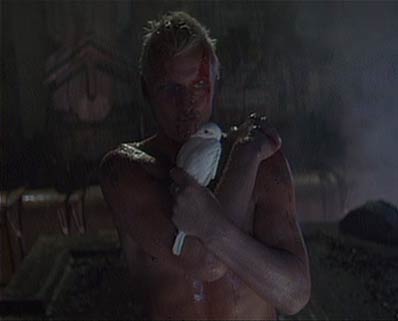Movie Review By: Mr. Roboto
Year: 2009
Directed by: Aleksa Gajic, Nebojsa Andric, Stevan Djordjevic
Written by: Aleksa Gajic
IMDB Reference
Degree of Cyberpunk Visuals: High
Correlation to Cyberpunk Themes: High
Key Cast Members:
Edit (voice): Sanda Knezevic
Bojan (voice): Nikola Djuricko
Broni (voice): Marija Karan
Profesor Dorijevic (voice): Vlasta Velisavljevic
Edi (voice): Nebojsa Glogovac
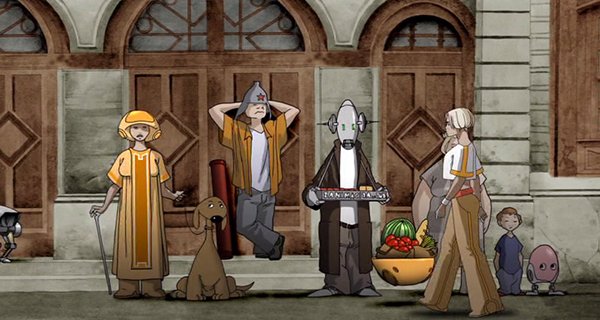
Overview: Not often that a good cyberpunk movie comes down the wires. Lately, the better ones have been coming out of Japan’s anime studios. Technotise could be the latest-and-greatest to come from the land of the rising sun… only it came from Serbia, not Japan, although the anime influence can be seen. While not enough to make those famed anime studios nervous… yet… it already has a live-action remake under development.
A sequel based on the comic (readable here, if you understand Serbian), Technotise looks into a bit of the the life of a college girl as she faces a struggle in Belgrade 2074 that could kill her.
The Story: Edit Stefanović is a psychology major in a Belgrade college. Like most students, Edit has had her successes and failures but mostly failures. Now her professor has given her an ultimatum:

“Pass or GTFO.”
After burying her robotic pet, and a fight with her mother, Edit decides to get a memory chip implant to help her pass the exam. She is also an intern at TDR, a research company that’s been working on a formula that connects all the energies in the world, aka “A direct line to God.” This “formula” can be used to predict the future, but any computer that calculates it becomes sentient before it shuts down. Abel Mustafov discovered the formula before becoming autistic, and when Edit sees a “graph” of the formula, her chip becomes alive and starts wiring itself into her body, making her act weird (like eating large amounts of iron). Now TDR wants Edit and the chip for their future-telling computers, while Edit wants what the chip did to her undone.
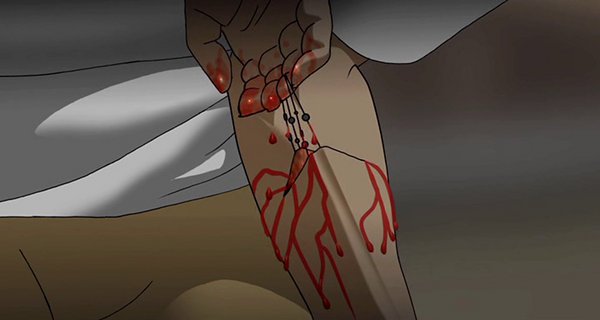
Algorithm Absurd. This phrase is used a couple of times to describe what happens to the computers that calculates the formula. Algorithm - like a computer program; A series of finite steps to generate an output from input. Absurd, the ludicrous, insane, irrational. The phrase is simply another way of saying: “That does not compute.” Apparently the computers see the formula like a digital existential crisis, one that says machines are not alive. But Edit’s chip doesn’t suffer the same fate, probably because of their connection to each other, or maybe because of Edit’s study of psychology she was able to “understand” the graph in a way that computers couldn’t so she acted as a “buffer” and the chip was able to process her output.
The next GITS? Like GITS, Technotise uses a variety of animation styles to produce some high quality movie fare. 2D, 3D, vector, and realistic static drawings come together for some of the best eye-candy. But without a good storyline, all you can get from eye-candy is diabetes. Fortunately, Technotise has the storyline to back up the visuals. About the only problem is the language is entirely Serbian with English subtitles so you might miss out on some of the vids.
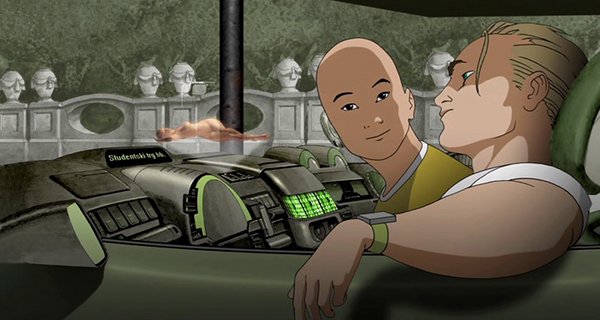
“I have nothing against plastic but sometimes you have to make out with some real meat.”
Conclusion: With the themes of the search for “God” via science and our continued interconnection of human and machine, we have some excellent cyberpunk fare to even anime fans happy for the next decade or so. This is one animated movie that can go byte-by-byte with GITS. Just get the DVD and see what I mean…
Movie Review By: SFAM
Year: 1985
Directed by: Terry Gilliam
Written by: Terry Gilliam, Tom Stoppard & Charles McKeown
IMDB Reference
Degree of Cyberpunk Visuals: High
Correlation to Cyberpunk Themes: High
Key Cast Members:
Sam Lowry: Jonathan Pryce
Jill Layton: Kim Greist
Archibald ‘Harry’ Tuttle: Robert De Niro
Mrs. Ida Lowry: Katherine Helmond
Michael Palin: Jack Lint
Spoor: Bob Hoskins
Mr. M. Kurtzmann: Ian Holm
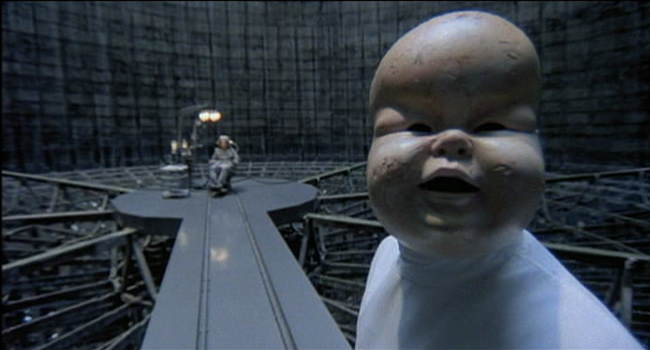
Overview: Terry Gilliam describes Brazil as “Franz Kafka meets Walter Middy” - this sort of fits. Using the name of Arry Barroso’s 1930s escapist song, Brazil is set in a nightmarish, fantasized dystopic future, Gilliam gives us a story about humanity attempting to escape reality by retreating into one’s own dreams. This is all the more interesting given the enormous fights Terry Gilliam had to engage in with Universal to even get the picture (in a non-bastardized form) released. Brazil is a visual and thematic tour-de-force which deserves a watch by all who are interested in having movies provoke deep thoughts, long after the film has concluded.
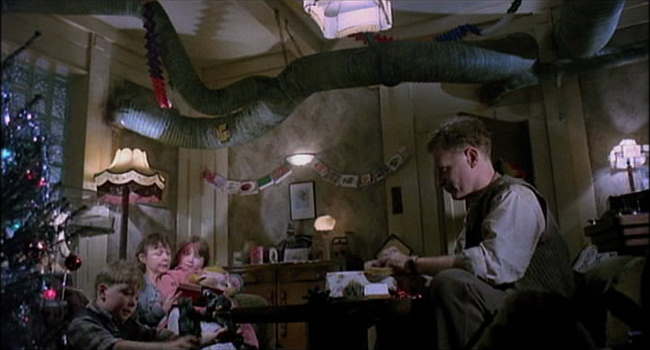
The Setting: Brazil takes place in a fantasized dystopic future where runaway, controlling, technocratic bureaucracy that has invaded all aspects of daily life. Arcane forms with incoherent instructions are required to do anything, but the goal is always completeness and finality over actual results. Appearances are everything in Brazil – actual human relationships are a luxury most do without. Humans survive in this world by keeping their “real” selves bottled up inside as a cocoon, while overtly they serve their role as a specific cog in the system. Keep the desk clean, the expensive suit pressed and your family looking perfect and you’ll be alright. Continually we see non-human responses to horrific disasters. In one restaurant scene, half the patrons have been blown up by a bomb, but the maître d’ is far more concerned with hiding the destruction from his elite patrons by erecting a pleasant backdrop than he is in helping those horribly injured.
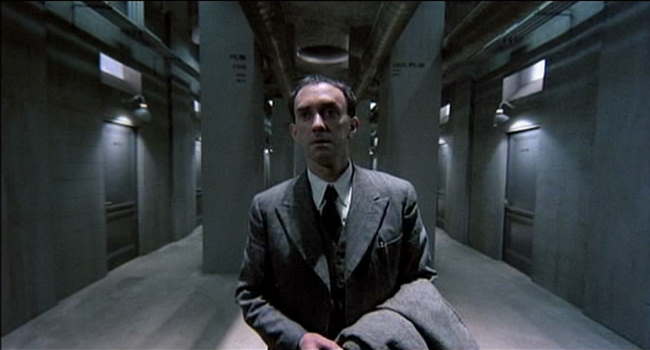
The Story: Sam Lowry (played wonderfully by Jonathan Pryce), our hero, from the beginning adapts to the system, but separates his “true” self in his dreams. Sam works as a minor cog in a the massively large bureaucracy called the Ministry of Information. The Ministry of Information eats up 7% of the total GDP in its pursuit of society’s subversive elements, including the terrorists, who randomly bomb the rich and wealthy throughout the movie. Even though Sam comes from a prominent family with connections, he wants nothing to do with career advancement. Sam long ago gave up aspirations, and only wants to get through life unnoticed - until the love of his dream life appears in the real world. Sam throws everything else aside in order to meet up with this chick, but unfortunately, the “system” and even his own preconceptions continually get in the way. As the story unfolds, we see the bureaucracy in action in what becomes a struggle of freedom and individuality against the technological domination of humanity.
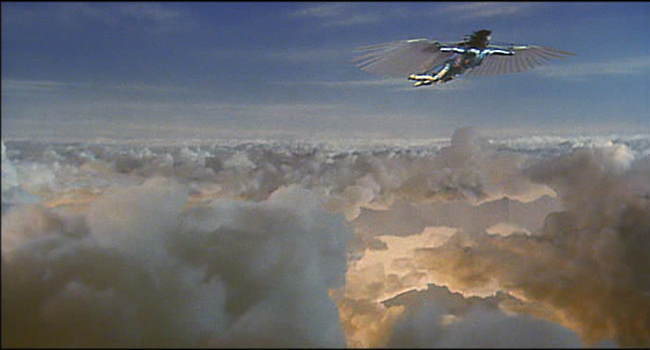
The Visuals: Brazil is a visually powerful movie. In its more sedate moments, Brazil starts off as a noir-ish style setting with 40s style suits and hats, tall squared buildings, computers driven by typewriters and dark lighting from above. But very quickly, Brazil changes to a surreal experience, which shoes converted to hats, ventilation pipes dominating every roomscape, and massive expansive buildings without ground floors. Ventilation pipes are Gilliam’s symbol for technology run rampant. Massively tall buildings are symbols for bureaucratic power. Throughout, dark gray is the dominating color. Visually, the world of Brazil is decidedly bleak – more bleak in fact than humanity can overcome.
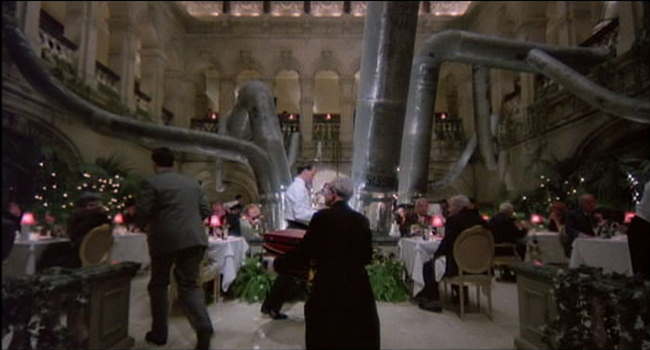
The Sound: Brazil’s score fully encapsulates the ambiance that Gilliam is expressing. We have high flowing orchestral pieces, cheesy, squeaky monophone songs, marches that integrate type-writers as the rhythm section, and all sorts of diversity that captures the quirky, bittersweet feel that Brazil often conveys. The continually harsh, metallic sound FX also highten the ambiance. What we are left with is a wonderful meshing of visuals and sound as a backdrop for the wonderful performances throughout.
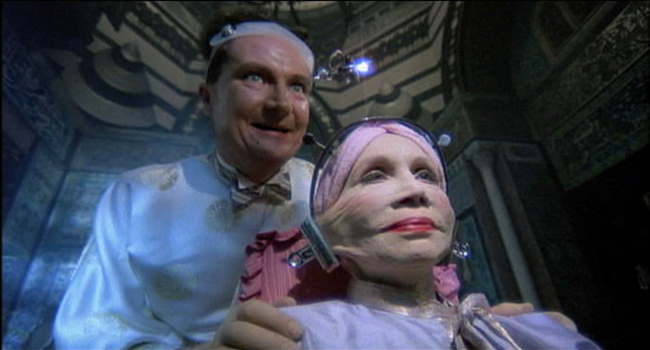
The Cast: One of Gilliam’s real skills in Brazil is taking an extremely large cast, filled with potentially interesting roles, and making them all meaningful. Continually, Brazil provides us a stream of totally interesting role players that add to the quirky universe that is this fantasized future. Robert De Niro is terrific as Harry Tuttle, a heat engineer-turned anarchist revolutionary. Michael Palin plays a terrific best friend and torturer, and Katherin Helmond plays a totally wierd, excentric but powerful mother. There are a number of other unique roles, including Ian Holm who plays a terrific cowardly, conniving boss, and Bob Hoskins as a slighted and crazed heat engineer. Jonathan Pryce is absolutely superb as the lead, and Kim Greist plays an interesting counter-point love interest. All in all, the roles come across as entirely memorable.
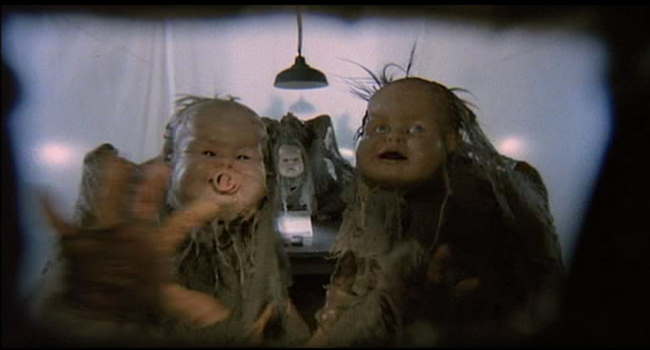
Dream Trapped Inside of a Nightmare: On the “Making of” segment of the Criterion Edition, Brazil is described as a dream trapped inside of a nightmare by star Jonathan Pryce. Pryce’s character, Sam Lowry, dreams the ultimate dream of happiness. In his dream, he is a fantasy warrior with angel wings who fights the denizens of the deep to rescue his idealized damsel in distress. In reality though, every aspect of his life is a nightmare. The “system” that is the bureaucracy, in an attempt to root out the terrorists, has extended its omnipresent tentacles into every aspect of life. At best, Lowry’s idealized reality involves being un-noticed by anyone. Unfortunately, once he discovers his idealized mate in real life, he can no longer remain obscure. He risks everything in a failed attempt to transform his dream into reality. In the end, Brazil shows how the depths of humanity can be crushed in a dystopic future where individuality and human rights become completely subservient to societal “welfare.”
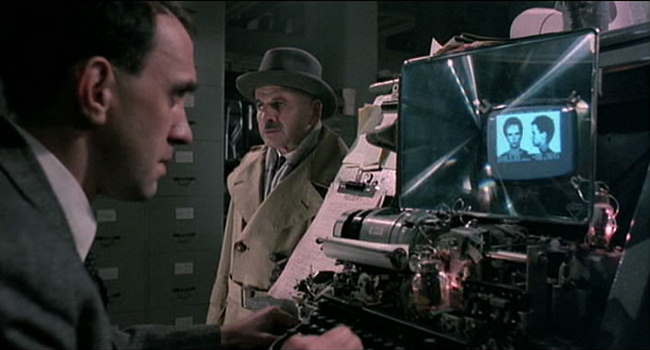
Use of Information: In Brazil, the collection and storage of information is paramount. While Brazil takes place in a dystopic future, computers have never advanced past arcane mainframes. The notion of usability, or people-centric computing is an anathema to the world of Brazil. The horror of horrors for the bureaucracy is finding a piece of paper without a home, or even worse, acknowledging that the “mistake” that caused this out of place paper belongs in your department! In Brazil, the fact that a person dies and a family is destroyed by this paperwork glitch is completely beside the point. In fact, the Samurai warrior character (see below) that Lowry fights in his dreams is fully comprised of computer parts – information and computers are indeed the ultimate evil for humanity.
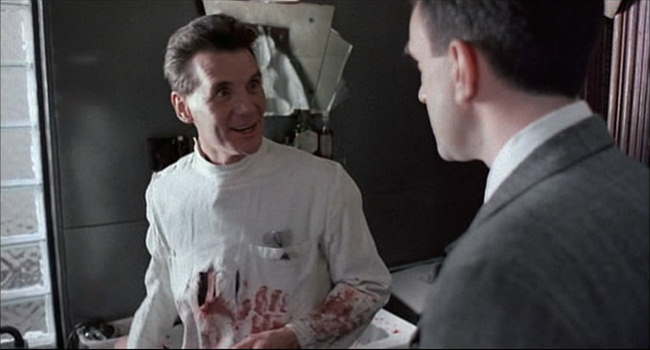
Terror As a Means of Extracting Information: One of the really interesting notions in Brazil that resonates today is the idea that the government engages in torture as a means of extracting information about potential terrorists. The throwaway comments from Sam, who has bought into this world, indicates that the choice HAS to be between this invasive government and sheer anarchy. When brought to the level of the individual, one has the sense that little by little, the government in Brazil slowly invaded individual freedoms as a way of combating the terrorists. The clear impression though is one of ever escalating acts – as the government becomes more invasive, the anarchic responses become more extravagant. De Niro’s character, the heroic anarchist heating engineer, represents this history of society, and humanity’s ultimate response.
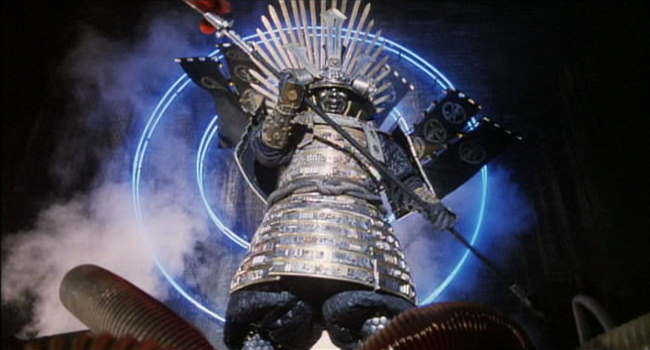
Is Brazil Cyberpunk? Due to the fantasy elements we see in Brazil, it’s hard to refer to it as a straight cyberpunk movie. While the dream sequences aren’t an issue, the dystopic future clearly isn’t supposed to represent an actual near-term future – it’s a fantasized version of issues currently playing out in society today. Still, the message of invasive technology and dominating totalitarian control destroying humanity is rarely done better than we see in Brazil. And while Brazil is wonderfully quirky, it’s the ending that truly feels like a cyberpunk film. Here we get both common cyberpunk visuals and philosophy in every sense of the word. The ending especially mimics many other cyberpunk films, where…
[SPOILERS – HIGHLIGHT THE TEXT TO SEE]
Throughout the last half of the film, Sam’s perception of reality becomes more and more governed by perceptions from his dream world. His actions leading to his final arrest are based on a perceptual mix of fantasy with reality. At the end, Sam is seems to make the conscious choice to disavow the real world in favor of his internally constructed fantasy. In this sense, Sam has finally attained the freedom he long sought after. Interestingly, a very similar approach is also used at the end of Save the Green Planet.
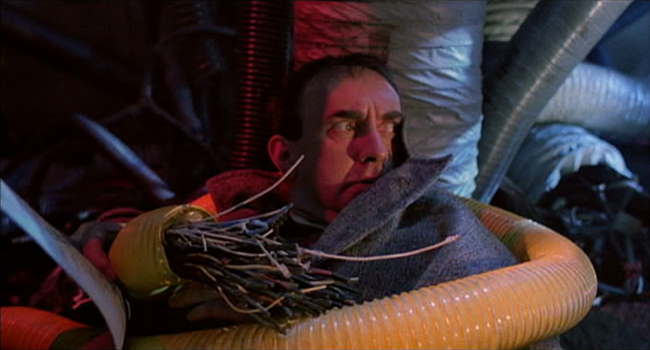
The Bottom Line: The world of Brazil is steeped in a runaway, controlling, technocratic bureaucracy that has its tentacles in every part of humanity. The ducts dominate every room, including the family household living room at the beginning. To humanity, the message is clear – “Your actual lives must be adapted to suit OUR needs, not yours; freedom now only exists in your own dreams.” In the end we are shown the myth of a free man in a tightly controlled society – the only freedom we ultimately possess is within our own perceptions – that is the only source where salvation can be found. Visually, Brazil is simply stunning. The story is incredibly creative, the acting is great (especially De Niro and Pryce) and the dialogue is terrific. Furthermore, your Gilliam’s wonderful sense of humor seeps out of every pore in this movie - such as the notion that the information retrieval department never retrieves any information. In short, Brazil is movie worthy of high praise.
Go to Page 2 for More Screencaps–>
~See movies similar to this one~
Movie Review By: Metatron
Year: 1979
Directed by: Ridley Scott
Written by: Dan O’Bannon & Ronald Shusett
IMDB Reference
Degree of Cyberpunk Visuals: Very High
Correlation to Cyberpunk Themes: Medium
Key Cast Members:
Ripley: Sigourney Weaver
Dallas: Tom Skerrit
Ash: Ian Holm
Kane: John Hurt
Lambert: Veronica Cartwright
Parker: Yaphet Kotto
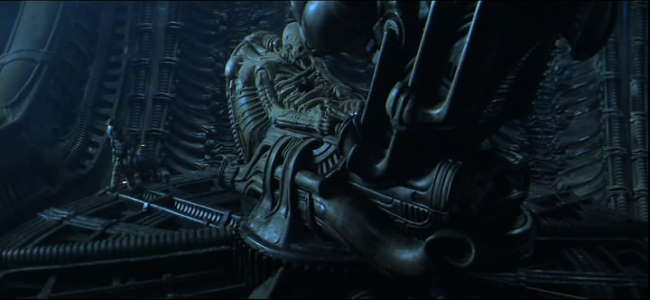
“WHAT’S THE STORY, MOTHER?” Back in 1979, something happened. A momentous event took place, one that would redefine things for years to come, its effects still lingering after all those years. Yet it is neither the none-too-peaceful Soviet meddling in Afghanistan nor the defiant revolt of Iran’s ayatollahs I’m referring to. Something else. A dark vision, a glimpse into the distant void of space. Where no one can hear you scream.
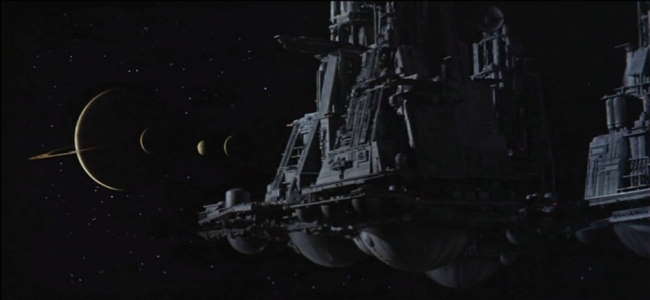
Sure no one could hear ME scream, as it would still be a couple of years before that other great moment in history- the birth of yours truly- but many others sure did when they first saw Ridley Scott’s masterpiece in all its big-screen glory. Must have been one hell of a ride. Another thing I’ve missed then… When I got acquainted with the said macabre flick, it was on a puny twenty-something inch screen and after having seen a multitude of more technologically advanced films. Nevermind. It still blew me away with the force of a 20-megaton nuclear charge. It was something new. An awakening, almost. Don’t ask me how life looked like before Alien. I can’t remember.
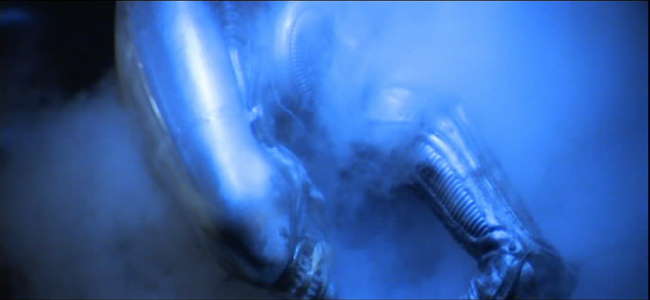
NOT OUR SYSTEM: Okay, so far so good, but there is just one tiny thing. Alien, as the name suggests, is about extraterrestial life. Not of the kind that whooshes past in gaudy flying saucers and abducts cheerleaders, but still very much not of this world. If you think cyberpunk, you obviously think implants, h4×0ring, electric sheep, that sort of thing. Surely a film about a black insect-like monstrosity eviscerating a bunch of interstellar cargo haulers does not fit in here? Well, at the risk of being summarily executed for heresy, I’ll say: yes it does. And, before you get that burning stake ready, I’ll tell you why…
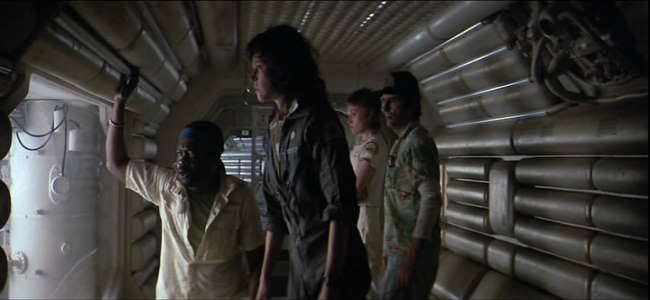
CREW EXPENDABLE: Distant future. USCSS Nostromo, a commercial spacecraft with a gargantuan ore-processing refinery in tow, its 7-man crew in deep hypersleep, encounters an unchartered backyard world from which a mysterious distress signal emanates. Mother, the ships’ computer mainframe, awakens the dreamers- Colonel Ellen T. Ripley among them- to investigate the cryptic transmission, as it is unlikely that its source is anything known to mankind… After landing on the planet’s precambrian surface, the crew discovers a derelict spacecraft… hey, you presumably know all that already anyway! Besides, for those lucky few who are still to live through the cathartic shock that is Alien, I shall try to keep spoilers to a bare minimum. Suffice it to say that they pick SOMETHING up on their unscheduled trip- and this something is just about as friendly to other organic life as H5N1 virus. Only slightly bigger. Needless to say, Colonel Ripley certainly won’t have any good memories from this particular flight…
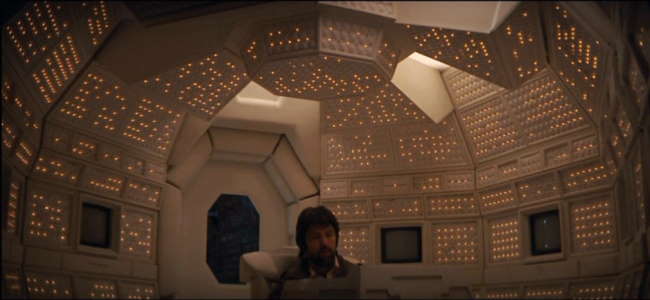
DOES NOT COMPUTE: Now the heretical part. I, regardless of how controversial a view that is, will argue that the original Alien is- you ready for this?- a cyberpunk film. True, it is not PURE cyberpunk in the way the Matrix or Ghost in the Shell are. But then again the vast majority of films reviewed here require some argument as to their cyberpunk credentials. A film does need to have ALL the relevant cyber themes either. Blade Runner and Terminator have no cyberspace, the Matrix has no androids and so forth. Same goes for the visual side. Admittedly, Alien is an uncommon hybrid, a fusion between horror and dark, cyberpunk sci-fi. But this only makes things more interesting.
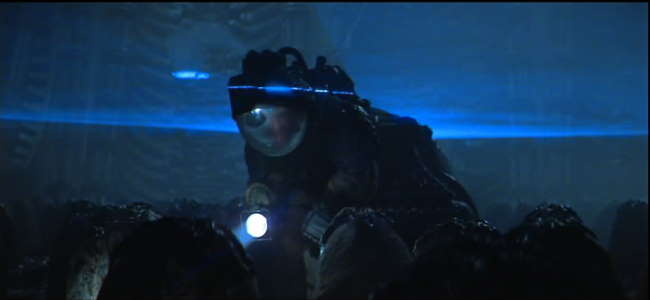
For a start, one needs to mention the existence of a shadowy entity that lurks in the background of the events in Alien (and two of its sequels)- Weyland-Yutani, a dark corporate monolith whose invisible, intangible hand guides many of the events that take place on the Nostromo and beyond. Admittedly, corporate control here is not organized in an oppressive, Orwellian kind of way. Few however would argue that its ruthless actions, removed from any ethical constraints, are any less disturbing. This fictional conglomerate is in fact not far removed from some modern-day corporations that cast aside moral and legal limitations to get what they want. Illegal deals, corruption at the highest level, worker exploitation, illegal drug trials, cover-ups- been watching the news anytime lately? Weyland-Yutani is merely the next step in evolution- a latter-day Wal-Mart, some may say. Not only willing to sacrifice Nostromo’s crew members, it is also quite fine with having its dirty work overseen by a cynical and efficient android, whose cybernetic identity only becomes apparent when a few parts come off…
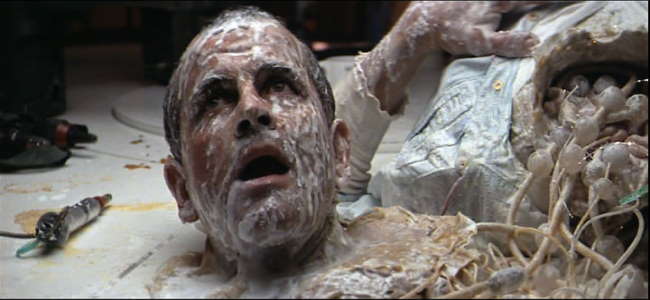
“A GODDAMN ROBOT!”: The inclusion of androids in the Alien series is another overarching cyberpunk theme. The first film does not explore the deeper implications of artificial life as much as the sequels do, but it’s still there. Here, the “artificial person” functions mostly as an extension of Weyland-Yutani’s almost limitless influence, a secretive overseer of affairs who closely follows implanted orders. But the subsequent films will explore this theme further. Rather than merely performing more identity tricks, androids take on a distinct societal role. One might quite correctly remember Bishop and Call, the other synthetics in the series, for their outstandingly vivid humanity, contradicted only by the milky white of their ersatz blood. Yet for all their moral qualities these sentient beings are condemned to an inferior- almost slave-like- role in society. And yet- for now- they accept that role with resignation, tolerating their place in the scheme of things. A programmed limitation? Hardly likely. Given their immensely strong self-awareness, one may imagine how challenging and unfair is it for an entity so humane to accept being treated as nothing more than a piece of property- so much so that Call in Alien Resurrection will at one point voice her defiance and disgust against what she was made to be. By way of comparison, in the first Terminator film the most sophisticated words uttered by our favourite mechanoid executioner are “fuck you, asshole”. See the difference?
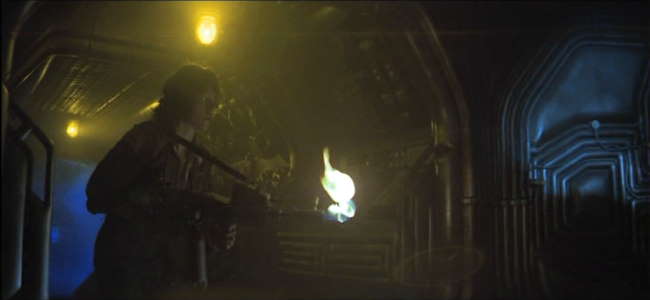
NO FURTHER ENHANCEMENT: The next important bit -the visuals. Powerful, provocative, and atmospheric, they exhibit the studied, gritty realism that has become the calling card of the series. In stark contrast to idealistic visions of the future often seen in other sci-fi films, Alien has gone down a totally different route, one that would later come do be associated with the cyberpunk genre. Case in point- the Nostromo, a far cry from sleek interstellar vessels of old. As it majestically looms into view at the beginning of the film, a mechanical cathedral emerging from the pitch black void, one can see that the film follows an entirely different canon of aesthetics. The ship is monumental, imposing through its sheer mass, intentionally unpretty. Similar approach carries on within, as we explore the craft’s unwelcoming, functional interior of labyrinthine complexity, its dimly lit, grimy corridors filled with snaking wires and exposed machinery. The crew quarters, while cleaner and more organized, seem no less depressing, exhibiting a cold, clinical look reminiscent of vintage computers. Every now and then, the screens will light up with sharply rendered readouts as the mainframes reawaken with eerie electronic chatter. As there was no CGI to fall back against, the only way to create the Nostromo’s vivid interiors was to painstakingly construct the whole set, which gives it a spectacularly tangible quality seldom seen nowadays. And one can almost feel the filmmakers pride, as the camera moves, unhurried, through these cold, industrial catacombs, studying the complex surfaces, celebrating their utilitarian crudity. Along with Blade Runner, this film has defined the core cyberpunk visual reference point for years to come.
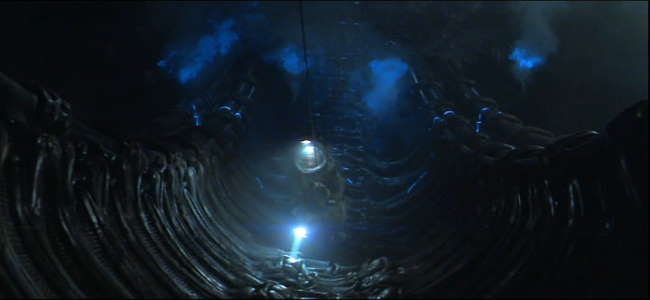
The Nostromo, however, does feel rather cozy next to the primordial desert in which it landed, a dark moonscape filled with surreal forms of bare rock. And it appears positively Arcadian compared to the infamous derelict ship, a bizarre structure, part mechanical, part organic, an otherworldly nightmare. Welcome to the dreamworld of H.R. Giger…
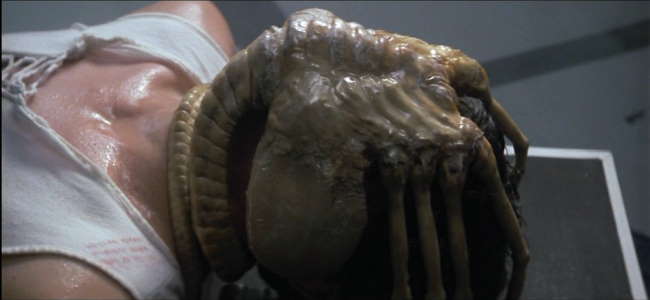
PERFECT ORGANISM: Often imitated and never bettered, Giger is a master of the grotesque. It is his wonderfully twisted mind that has spawned what is probably the greatest creature designs ever. Yet the Xenomorph is only one of Giger’s many dark, disturbing visions- many of which have caused outbreaks of controversy due to their blatant, twisted eroticism. Indeed, much of the Alien’s looks and life cycle can be seen as a perverse sexual metaphor. Yet Giger’s art is first and foremost a study of a peculiar symbiosis between man and machine, an often perverse fusion of the robotic and the organic. Next to his biomechanical mutations, most depiction of cyborg flesh appear staid and conservative. Some theories about the Xenomorph itself in fact suggest that its obscene, insectoid form was not a result of evolution, but deliberate design, the entire species intended for use as the ultimate bioweapon by a mysterious extraterrestrial race to which the forsaken spacecraft belonged. In that respect, it seems to blur the line between biological and artificial life, being something of an organic killing machine. And, it has to be added, a pretty effective one at that.
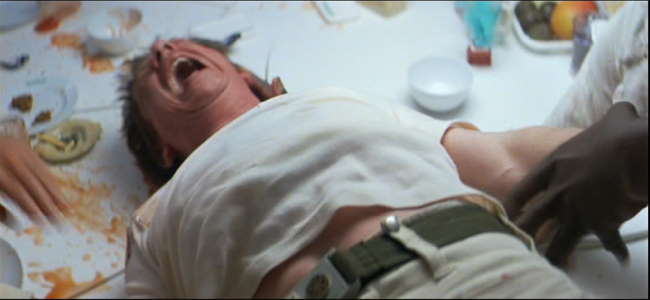
HEAR THEM SCREAM: The sound effects complete the package. From the moody, unmistakable musical score by Jerry Goldsmith to the sonic assault that we are treated to in the final sequences, as self-destruct alerts moan mournfully and explosions fill the air, this is a true masterpiece. The sound effects also have definite cyberpunk traits- the strange bleeps and machine chatter generated by the ship’s electronics are one of the best I’ve ever heard. And the Alien shrieks are almost music to my ears…
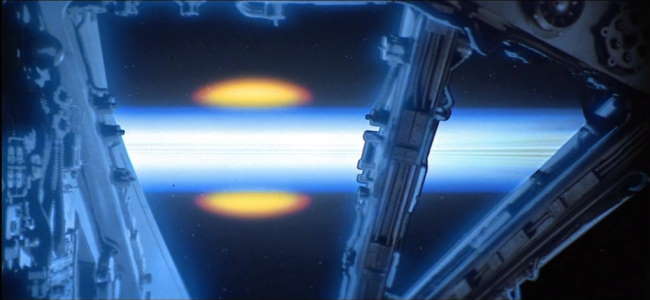
SIGNING OFF: Ripley’s confrontation with the Alien would not, of course, be the last. Three sequels have followed, each surprisingly managing to explore new themes, many of which have strong relations to the cyberpunk movement as well. Rumours of a fifth installment still linger, even though the outstanding flop that is AVP has cooled some of the enthusiasm down, and Weaver, whose evolution from a scared little girl into a seasoned Xenomorph slayer was one of the major aspects of the film, has denied involvement. We shall see. Whatever its future may be, the Alien franchise has often been seen as sitting uneasily among the more obvious cyberpunk films. Being a hybrid, it was bound be frowned upon by the purists. Yet the mere fact that it involved some non-cyber themes made many ignore the fact that it had loads of thematic links to the genre, plus its visual side is arguably closer to the orthodox cyberpunk ideal than Equilibrium, Casshern and Dark City taken together. And that it was made by the very same man who brought us a certain film involving runaway replicants. In fact the series came painfully close to gaining a sort of blessing from William Gibson himself, who has produced the original script for the third Alien film- one that, for some bizarre reason, got rejected. If it succeeded, the perception of the franchise in terms of its cyberpunk credibility might have been very different indeed.
And now if you excuse me, I’m off for a heresy trial…
More Alien Screencaps on Page 2–>>
~See movies similar to this one~
Year: 1984
Directed by: James Cameron
Written by: James Cameron, Gale Anne Hurd
IMDB Reference
Degree of Cyberpunk Visuals: High
Correlation to Cyberpunk Themes: Very High
Key Cast Members:
The Terminator: Arnold Schwarzenegger
Kyle Reese: Michael Biehn
Sarah Connor: Linda Hamilton
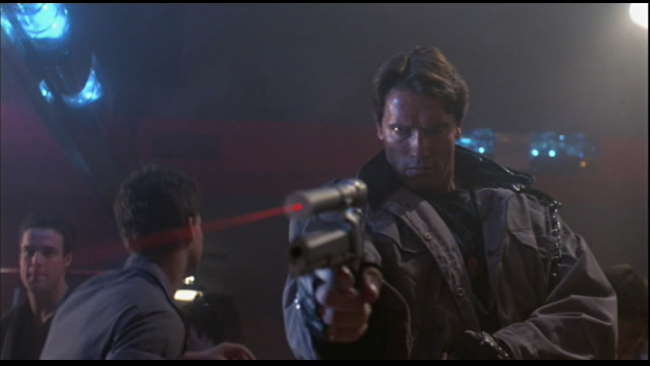
“The Terminator’s an infliltration unit…part man - part machine. Underneath it’s a hyper-alloy combat chassey…microprocessor controled…fully armored - Very tough. But outside its living human tissue…flesh…skin…hair…blood - grown for the cyborgs.”
Overview: No movie has been more imitated in cyberpunk than the Terminator. While most of the imitations have been grade “B” shlock films, they attest to the intense effect that the Terminator had on our consciousness. This film is legendary, and easily ranks in the top 5 or 6 most influential cyberpunk films ever created (Blade Runner, Metropolis, Ghost in the Shell, and The Matrix being the other four, and Alien if you consider that cyberpunk). Terminator is a film with terrific replay value – so much so that I’m guessing all of you have seen it enough times that I don’t need to bore you with a plot overview. With a 6.4 million dollar production budget, this is far from a big-budget blockbuster. The reason it’s stood the test of time, and in fact comes across as a block buster, comes down to incredible execution by beginning film maker James Cameron and cast.
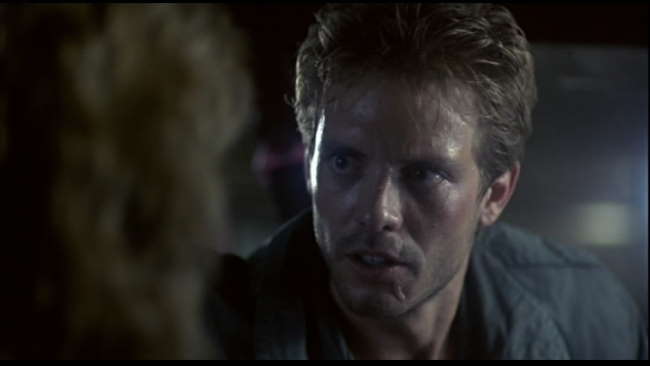
“I’m here to help you…I’m Reece - Sargeant Tech Com BN38416 - assigned to protect you…You’ve been targeted for termination.”
The Acting: From Schwarzenegger’s eery style of acting, to Linda Hamilton’s growth on screen from a shy teen to tough mother of mankind, to Michael Biehn’s tour-de-force performance from beginning to end, the leads flat out carry this movie. That said, the background characters are all terrific, including Bill Paxton at the beginning (“Fuck you, asshole!”), to Paul Winfield (Lieutenant Traxlet), Lance Henriksen (Detective Vukovich) and psychologist, Earl Boen. There are too many memorable scenes to relate here, but the real strength of the acting in this case comes more in expressions and setting mood than it does in delivering the lines, although Beihn’s narrative in particular is riviting.
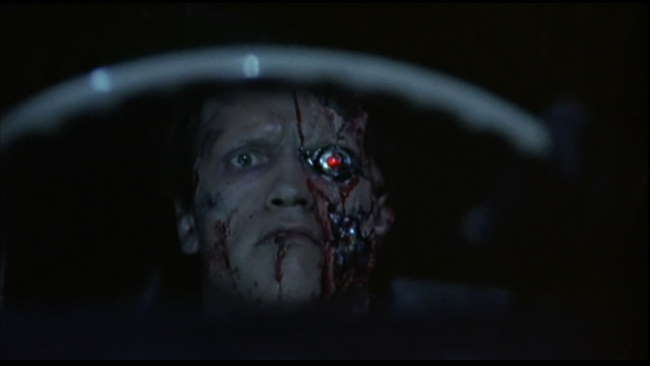
The 600 series had rubber skin. We spotted them easy. But these are new…they look human. Sweat…bad breath…everything…very hard to spot.
Reece’s character does straight exposition to explain the story, which is usually a lousy delivery method. However, the mix of action and exposition just works. The dialogue was terrific, and Reece delivered it in the context of a high-tension chase. During this, Hamilton’s character literally transforms from a vulnerable, girl-next-door to a hard-edged, do-what’s-necessary, take charge kind of gritty leader. Their chemistry is terrific. They have a shy tension, that eventually turns into an intense, believable love affair. It’s kind of amazing that the studio originally wanted Arnold Schwarzenegger to play Reece. Schwarzenegger as the Terminator provides us one of the all time characters in all of scifi. He is the ultimate warrior android, and has been imitated far too many times to count.
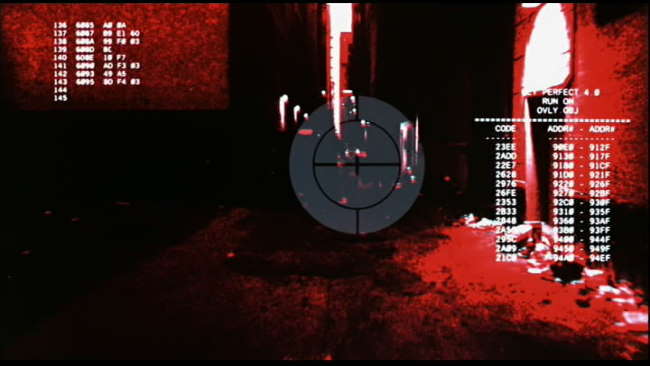
“There was a nuclear war…about a few years from now…all this….this whole place…its gone…just gone… the survivors…here…there…nobody knew how it started…it was the machines, Sarah.”
The Pacing: The Terminator’s pacing is probably the most copied aspect of this film. The Terminator, from the very first scene to the very last is a chase movie. The tension goes from high to massively high to short breathers, back to massively high tension. You literally feel tired after watching this. While this doesn’t seem unusual now, back in the early 80s, The Terminator took the hectic fast pacing of Raiders of the Lost Ark and adapted it to a full scale chase flick. The real magic here was Cameron’s ability to embed a fascinating story into the chase, while changing the bad guy from human to robot to basically add a completely new feeling to the chase.
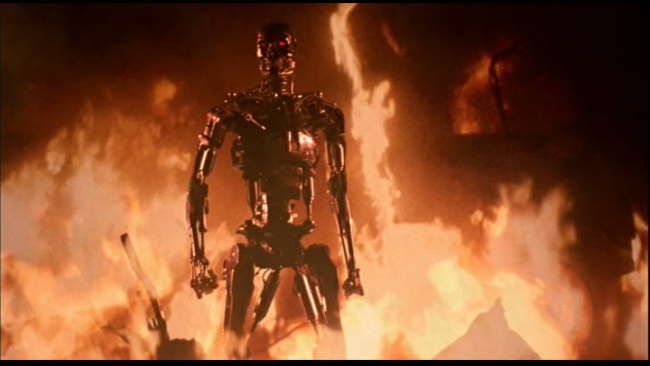
“You still don’t get it, do you…He’ll find her. That’s what he does! That’s ALL he does! You can’t stop him. He’s wade through you, reach down her throat and pull her fucking heart out!”
The FX: For the budget, Terminator’s FX far exceeded anything that should have been possible. The Endoskeleton, made up of miniatures, models and stop-motion animation, is now part of movie lore. The car chase scenes still look terrific, as do the explosions. The near-future dystopic scenes are completely riveting, especially the flying HKs! However, a few of the model shots of Arnold do look slightly dated now (most noticeably when Arnold takes out his eye).
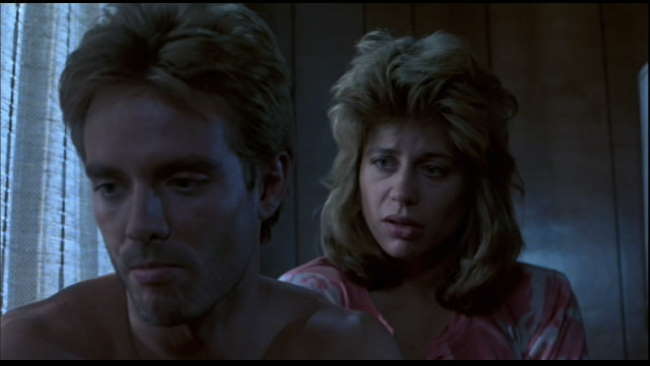
“In the few hours we had together, we loved a lifetime’s worth.”
The Score: Brad Fiedel’s percussive, driving beat that creates an industrial masterpiece that absolutely nails the feeling of The Terminator. You can still here the “dun-dun dun dun-dun” beat and IMMEDIATELY get teleported back to that sense ominous doom of the future that the Terminator portends.
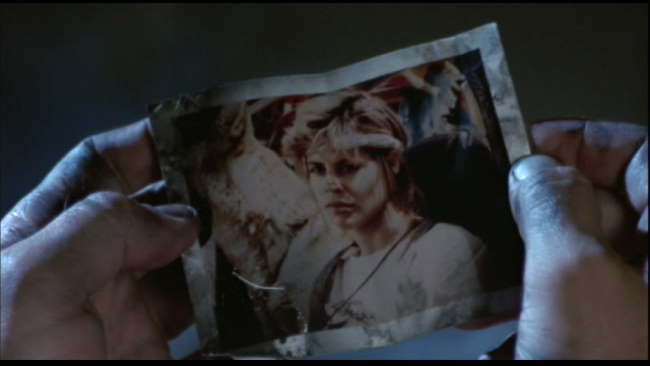
“That was a good hussle, kid.”
Time Travel: The Terminator provides us one of the best time travel movies in cinema. It’s intelligently done in a coherent way that really sets the picture moving. But the real majesty is in the photograph (see above). I LOVE the picture and everything it represents. There, in that one image, we get the entire love affair of Sarah and Reece, John’s struggle relating to someone he knows to be his father (but who cannot know in return), Sarah’s future journey, and a wonderful mind fuck to boot! The placement of the time travel elements at the beginning and ending of the story really do add impact to its meaning.
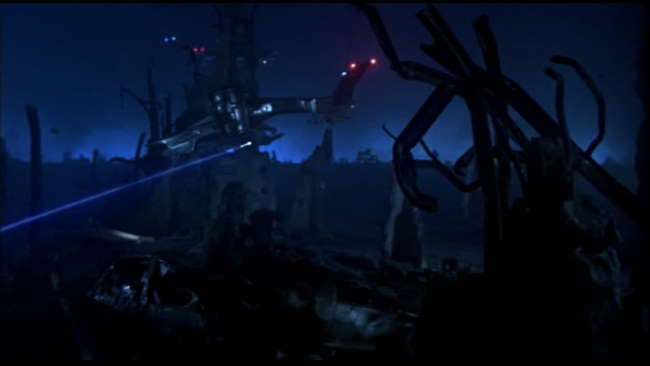
“You stay down by day, but at night you can move around. You still have to be careful because the HK’s use infrared…they’re not to bright…John taught us ways to dust them…”
Guerilla Filmaking: In watching the most awesome extras on special edition DVD, it’s clear that the Terminator was way over-ambitious (thank God!). In post-production, it was clear to Cameron that a number of additional unfunded scenes were needed in order to make a complete picture. Cameron used his weekly director’s pay to pay skeleton crews to go out and do additional shots – often which used incredibly low-end effects. For instance, the body bag used at the end was actually Cameron’s suit bag. The scene at the beginning where Arnold breaks into the station wagon was filmed with just him and Cameron, worrying about the police seeing them as Arnold breaks the car window (Arnold’s clothes for the scene were in his trunk – he had to change in the car!). More incredibly, the last shot of the Terminator, where the red eye slowly fades, was shot later – the smoke you see there was someone breathing cigarette smoke on the eye! In short, everyone gave blood, sweat and tears to make sure this film looked as good as it did.
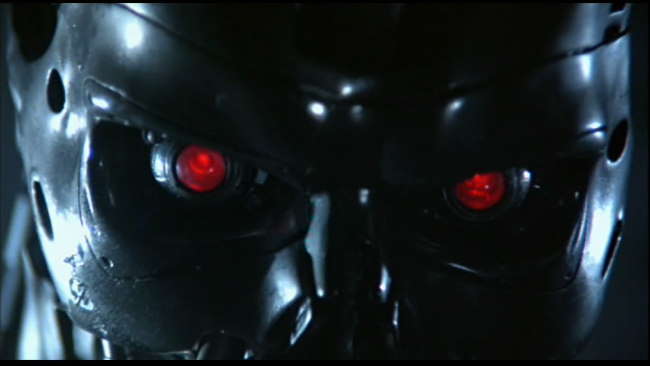
“That terminator is out there…it can’t be bargained with…it can’t be reasoned with. It doesn’t feel pity, or remorse…or fear. And it absolutely will not stop - EVER - until you are dead!”
The Bottom Line: The mood, energy and intensity of The Terminator oozes from every pore of the first shot to the last. If you are one of the very few who has not experienced this movie, you’re in for a treat! If you’ve seen it before (many times even), chances are you’ll be seeing it again. The Terminator definitely deserves a place of honor in the pantheon of cyberpunk flicks. One problem this film does give from a categorization perspective - they call the Terminator a cyborg, but he is really an android (even Cameron calls him this on the extras). The definition of a cyborg implies an augmented human, not an android covered with human tissue. I give it 9 stars as a movie, but add an additional star for its overall impact on film making.
Terminator Page 2: More Screencaps–>>
~See movies similar to this one~
Year: 1999
Directed by: Andy & Larry Wachowski
Written by: Andy & Larry Wachowski
IMDB Reference
Degree of Cyberpunk Visuals: Very High
Correlation to Cyberpunk Themes: Very High
Key Cast Members:
Neo: Keanu Reeves
Trinity: Carrie-Anne Moss
Morpheus: Laurence Fishburne
Agent Smith: Hugo Weaving
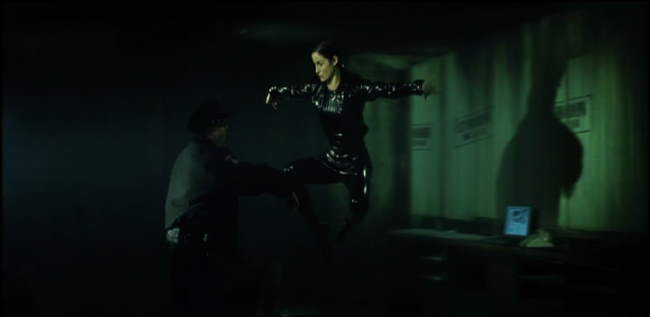
Definitely my favorite opening sequence of all time. Just a great great start to a movie!
Overview: The Matrix is one of my all-time favorite movies, so I’m just not going to attempt to come off as unbiased about it. Additionally, I’m guessing that pretty much everyone who’s coming to this site has seen it - probably numerous times, so I’m guessing a plot description isn’t of much value here. In short, my conundrum with the review is this - what should I say about this movie that will in any way add value to the reader? Answer: Not much. Instead I have decided to keep the bulk of my comments for various essays on the Matrix Trilogy.
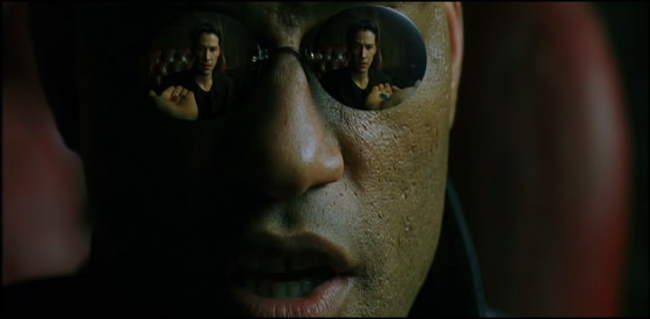
Matrix Influences: The Matrix influenced movies in general and society as a whole. With respect to movies, we see numerous influences, including:
- Special Effects: Bullet time and a myriad of other FX are now standard practice in movies and commercials
- Synonymous with “Cool”: Movies that have a “matrix-like” feel are advertised all the time. We know what this means - it means they aspire to be ultra-sleek, ultra-cool and the “in” thing.
- Fight Sequences: By hiring Hong Kong Martial Arts master Yuen Wo-Ping to coordinate the fights, the Matrix raised the bar on mainstream American movie fight sequences
- Matrix Source Code: The Matrix source code, taken in part from Ghost in the Shell, is everywhere now, and is instantly recognized, as is its meaning
- Hot Chicks in Black Shiny Stuff Kicking Butt: Trinity’s influence has massively upped the anty on action chicks in movies. While Michelle Pfeiffer’s Catwoman in Batman Returns re-initiated this trend, Carrie Anne Moss’ Trinity has made this outfit almost mandatory for female action heroines.
- The use of philosophy in movies: The Matrix seems to have broken the barrier to discussing philosphy in movies. Lets hope this idea lives on.
- Fashion: From Sunglasses, to overcoats to cyberpunkwear, the Matrix has changed the way people dress.

The Bottom Line: The Matrix is already one of the most influential in science fiction, and is truly one of the cornerstone cyberpunk movies in existence. We get it all here: terrific action, awesome cyberpunk concepts, incredible cyberpunk visuals, cool philosophical discussions, an absolutely awesome soundtrack (although DoomAng3l disagrees with this - see his comment below) and innovative FX. On top of this, all the leads were terrific. Reeves makes a perfect Neo, and Moss, Fishburne and Weaving give career-defining performances. Look below for move screencaps on page 2, and additional essays on the Matrix.
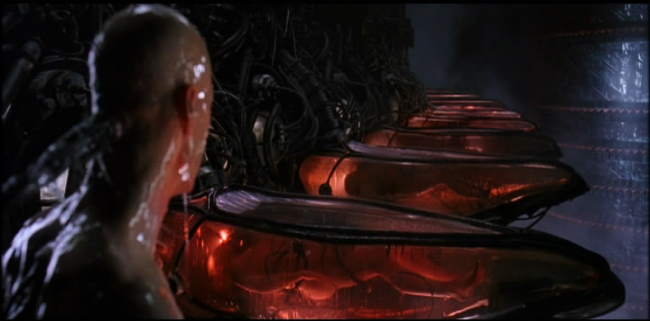
Matrix Essays
- The Matrix Trilogy: A Man-Machine Interface Perspective: This essay explores the Matrix Trilogy specifically from a scifi perspective - the purpose of which is to show how Neo’s journey is really a sequel to Motoko’s transformation at the end of Ghost in the Shell. Developed throughout the trilogy, Neo becomes a fully merged entity comprised of a sentient program with a human.
Page 2: More Screencaps–>>
~See movies similar to this one~
Year: 1995
Directed by: Mamoru Oshii
Written by: Kazunori Itô, Shirow Masamune (Manga)
IMDB Reference
Degree of Cyberpunk Visuals: Very High
Correlation to Cyberpunk Themes: Very High
Key Cast Members:
Major Motoko Kusanagi: Atsuko Tanaka
Batô: Akio Ôtsuka
Section 9 Department Chief Aramaki: Tamio Ôki
Togusa: Kôichi Yamadera
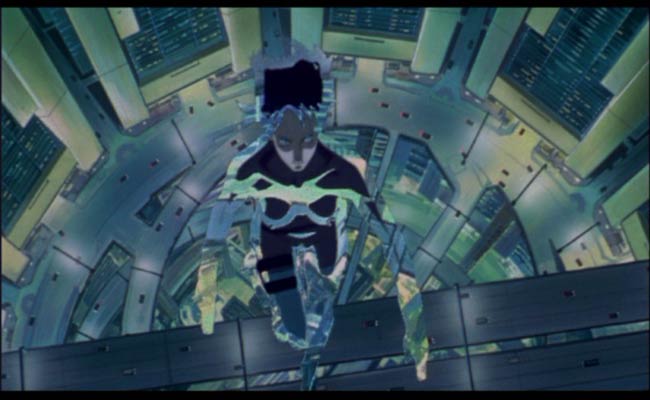
And where does the newborn go from here…the net is vast and infinite…
Overview: After Akira, a case can be made for Ghost in the Shell being the most influential anime ever. While Akira was the first anime to crack international markets, GITS rose anime to something “real,”, and opened the doors for events like Disney’s pursuit of Miyazaki, and eventually, the truly incredibly pace of anime we see today. More important for cyberpunk films, GITS provided a myriad of thoughts and visuals that have been expanded upon in virtually all subsequent cyberpunk animes. James Cameron refers to GITS as the first truly adult animation film to reach a level of literary and visual excellence.” In addition to a wonderfully complex and introspective story, we get heart-thumping, realistic action, all served up with some incredibly revolutionary animation techniques that places GITS on a juicy platter for all to enjoy.
~ Fair warning - there are a few plot spoilers below in the matrix discussion - I simply couldn’t write this, especially with linkages to the Matrix without including an interpretation of the ending of GITS. ~

GITS shows us a very realistic looking near future set in the year 2029. The visuals are intricately detailed and depict grunge settings next to the highly sanitized corporate world. In 2029, people have the ability to augment their bodies with cybernetic replacement parts. In some cases, people have almost fully replaced their human bodies, leaving only their brain encased in a cyborg shell. The brain is even augmented with hyper-intelligent access to knowledge and communication packages. But the person, and we use that term loosely now, still has a ghost, or soul if you will - an emergent property of life that separates a human from a robot. Even though the majority of their human material is replaced with a cyborg-like shell, if the individual retains their ghost, they still retain their personality and individuality - their humanity if you will.
This cyborg shell is not the same as a robot. The limbs and body still communicate with the brain in a digital nervous-system-like operation. If we include Masume Shirow’s vision (the writer for GITS), the cyborg’s sexual parts are even fully functional. This means that in essence, their cyborg shell aids in the creation of an individual’s ghost. While this is terrific, a downside is the ability for evil-doers to engage in Ghosthacking - or the taking over of someone’s perceptual control, or worse, augmenting their artificially enhanced memory.
The story centers on Major Motoko Kusanagi, an almost fully mechanically enhanced cyborg secret operative working for Section 9 - Japan’s anti-terrorism division. As the movie progresses Motoko and her cyborg partner, Batau start to uncover a plot involving another ministry that seems to be engaged in a cover-up. Eventually, we find that this cover-up involves a seemingly nefarious hacker named the Puppet Master. In pursuing the Puppet Master, Motoko finds out that all is not what it seems- that in fact the Puppet Master is a sentient program, and never had a body. More interesting, the Puppet Master has been looking for Motoko!
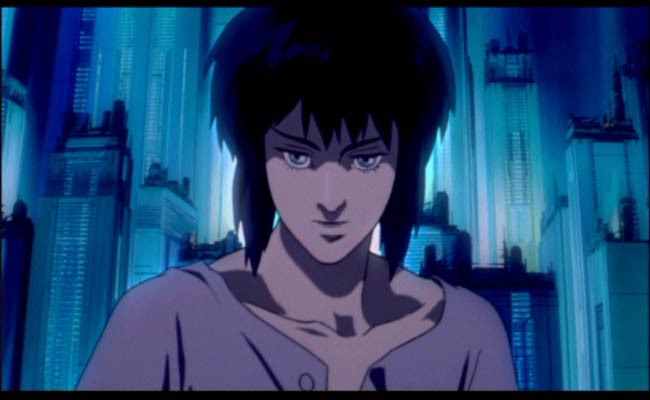
Revolutionizing Anime: Oshii revolutionized animation in GITS with a myriad of new and innovative computer graphics techniques. In short, Oshii pushed the boundaries for state-of-the art animation with GITS. Oshi scanned his animation cells in to a digital system so that he could import them into an editing suite to get all sorts of cool lens effects. For instance, in the above pic, Oshii is able to emulate a contra-pull type effect where the camera moves back, and the lens moves forward. In viewing this, the background expands while the foreground eerily stays in the same place. This works wonderfully for Motoko’s questioning of humanity speech. And this is only one of many interesting used of digital shots. Other techniques include interesting overlays that depict either brain activity or maps, for instance.
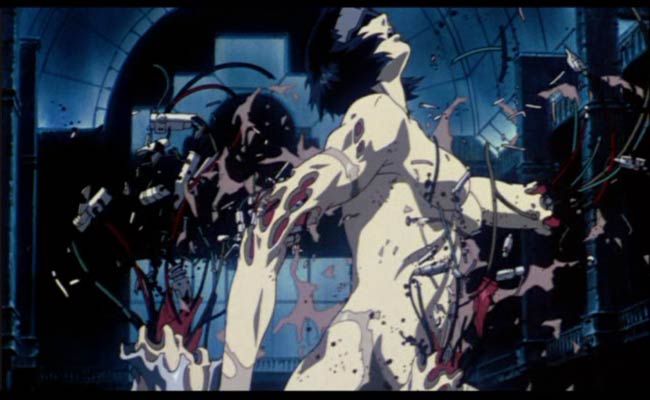
Questioning Humanity: Ghost in the Shell still provides anime’s the best examination in the questioning humanity. GITS is dominated by an ongoing discussion of what it means to be human and really, what it means to be alive. Is Motoko really still human? Even she doesn’t know the answer anymore, and actually questions whether she really has a ghost (how would she be able to differentiate a fake ghost from a real one?). This line of questioning is artfully developed in a way that makes Motoko the character in all of anime that I empathize with the most. You truly feel for the dilemma she finds herself facing.
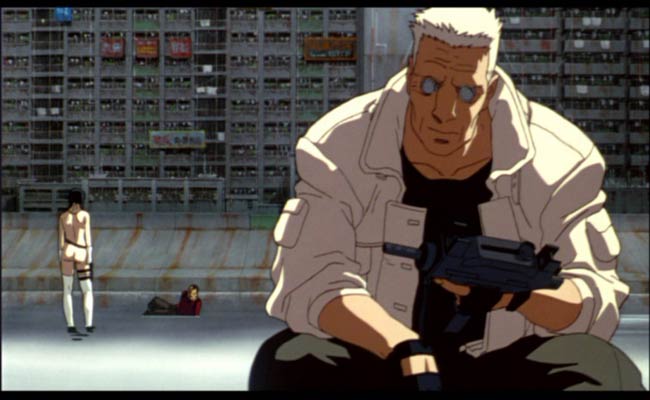
What is the Matrix? If we examine the Matrix, we find that both the visuals and storyline are heavily influenced by Ghost. There are some rather explicit visual “nods” in the first Matrix, including the opening digital sequence, Mr. Smith’s building jump where he breaks the concrete beneath him (this is virtually identical to Motoko pursuing the first puppet victim), and the shooting of the fruit stand where Neo is running near the end. On top of this, we have a reversal of roles in the Matrix, where Neo plays Motoko and Trinity emulates Batau. And again, the Wachowskis make no bones about where their influence came from - they, as much as anyone, have contributed to Ghost’s ever increasing popularity.
In looking at the storyline, we find even more interesting parallels. Ghost in the Shell ends with Motoko merging with the sentient program called the Puppet Master (Project 2501). This allows the Puppet Master produce a diversity of offspring that is simply not possible to do with copies alone. This has a direct parallel to the scifi view of Neo in the above review. While Ghost in the Shell 2: Innocence is the philosophical sequel to Avalon, the Matrix trilogy is just as clearly the sequel to Ghost in the Shell. Whereas GITS ends with this merging of a sentient program with a human ghost, the Matrix expands on this idea. We see Neo take the same journey, but in a very different way. He conducts this symbiotic merging over 3 movies whereas Motoko does this in a matter of minutes. We see Neo, through this merging of sentient program with a human, become the “one” - an omnipotent style being. This characterization is similar to the characterization that Batau gives of Motoko in GITS2 in his dogs and gods versus flawed humans speech.
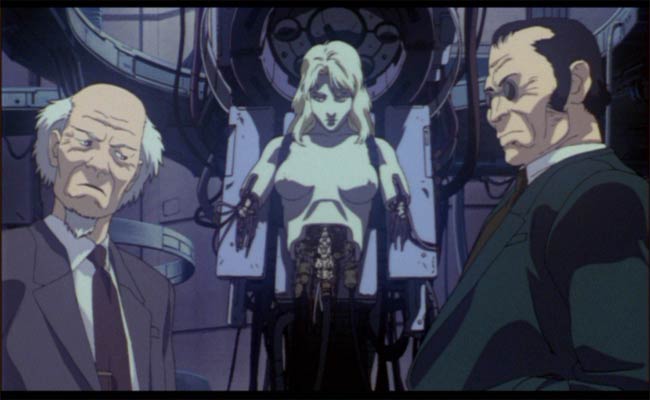
Also interesting is the linkage between the puppet master’s desire to digitally produce offspring with Neo’s reloading of the Matrix. The puppet master discusses this at the end of GITS in the “Life perpetuates itself through diversity and this includes the ability to sacrifice itself when necessary” monologue. If you trace the linkages, Neo’s reloading of the Matrix this is a method for the sentient program portion of Neo to create diversity and offspring. The merging of Neo allows the sentient program to grow and develop in ways simply not possible by itself. Familiarity with Neo’s Ghost allows it to make the changes necessary to correct the errors that build up in the current Matrix that prompt the battery people to disbelieve their surrounding.
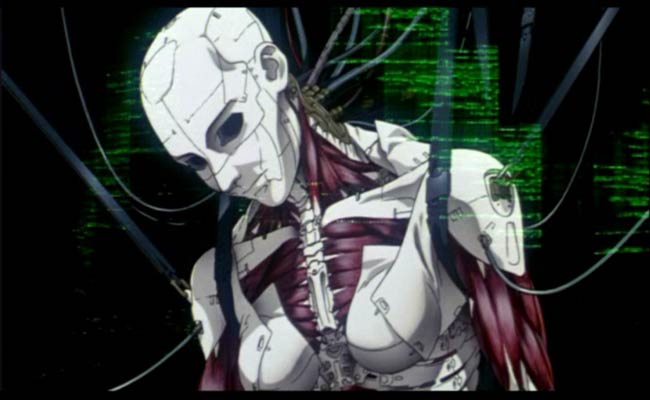
Finally, Ghost gives us a truly interesting vision of the future. We get sound astoundingly realistic and grungy cityscapes that are filled with the most impressive technological horrors. Is it truly a stretch to imagine that technology will augment our physical abilities? This is the bionic man taken to another level. On top of this, if we truly can learn to connect manufactured parts to our nervous system, is it really that far of a stretch to imagine that our brains become augmented? And over time, is it truly a stretch to believe that the line between humanity and robot won’t be blurred? GITS questions these articles of faith in such a believable way that we have seen a shift in our overall thinking on this issue.
The Bottom Line: Truly, even if you ignore all this philosophical stuff, Ghost in the Shell is simply an awesome movie! The action is terrific, the visuals are great, the soundtrack is devine…I could go on and on. If you just see one anime, Ghost in the Shell, still my favorite anime, is hands down the one to get.
Page 2: More GITS Screencaps –>>
~See movies similar to this one~
Tags: cyberpunk movie review anime ghost shell
Year: 1995
Directed by: Terry Gilliam
Written by: Chris Marker, David & Janet Peoples (screenplay),
IMDB Reference
Degree of Cyberpunk Visuals: Very High
Correlation to Cyberpunk Themes: Very High
Key Cast Members:
James Cole: Bruce Willis
Kathryn Railly: Madeleine Stowe
Jeffrey Goines: Brad Pitt
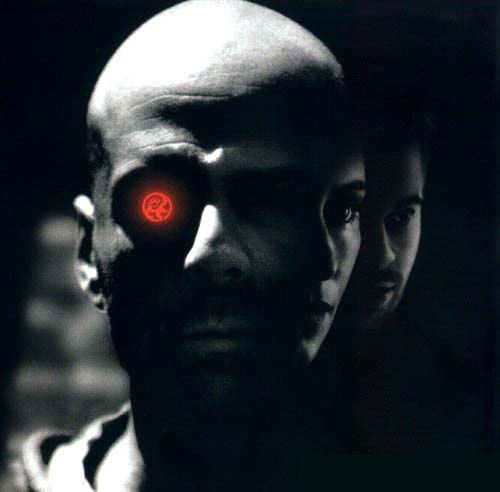
Overview:Twelve Monkeys is yet another tour-de-force from film maker Terry Gilliam. Done as a remake to the very innovative experimental French film, La Jetée, Gilliam is able to take the same notions of time travel, dystopic futures and personal trauma and love, and wrap it into a truly riviting package.
Because of the similarities, I have reviewed this movie in-depth in combination with La Jetée (these two movies truly go together). Please check it out:
~See movies similar to this one~
Tags: cyberpunk movie review
Year: 1962
Directed by: Chris Marker
Written by: Chris Marker
IMDB Reference
Degree of Cyberpunk Visuals: High
Correlation to Cyberpunk Themes: Very High
Key Cast Members:
Narrator: Jean Négroni
The Man: Davos Hanich
The Woman: Hélène Chatelain
The Experimenter: Jacques Ledoux

Overview:La Jetée as a movie is one of the most interesting I’ve encountered. Virtually the whole movie involves narrating still shots. While this sounds like a glorified slideshow, its anything but. The pacing is magnificent. The mood created is truly immersive. In a truly astounding feat, Marker traps the viewer in this "slide show" mentality, and then, as the movie is discussing whether the character can decipher what’s real or not, he pulls the run out from under us.
I have reviewed this movie in-depth in combination with 12 Monkeys (these two movies truly go together). Please check it out:
~See movies similar to this one~
Tags: cyberpunk movie review
Year: 1982
Directed by: Ridley Scott
Written by: Philip K. Dick (Novel), Hampton Fancher & David Peoples
IMDB Reference
Degree of Cyberpunk Visuals: Very High
Correlation to Cyberpunk Themes: Very High
Key Cast Members:
Rick Deckard: Harrison Ford
Roy Batty: Rutger Hauer
Rachael: Sean Young
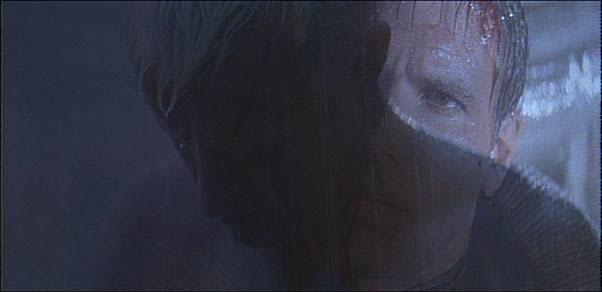
I’ve seen things you people wouldn’t believe. Attack ships on fire off the shoulder of Orion. I watched C-beams glitter in the dark near the Tannhauser gate. All those moments will be lost in time, like tears in rain. Time to die…
Overview: If you read a lot of the reviews from others about movies on this site, you’ll find that over half of them reference Blade Runner in some way, other in the visuals or issues discussed. Along with Gibson’s Neuromancer, Blade Runner did more to establish cyberpunk as a genre. The fact that Blade Runner came two years prior to Neuromancer is rather interesting. Truly, this film set the standard for the near-future film noirs sub-genre we call cyberpunk.
Not too dissimilar to the wrath that greeted Metropolis’ release, Blade Runner was not an instant hit. Instead it grew from being critically panned to a cult classic, to now, where its well on its way to being considered a timeless classic.
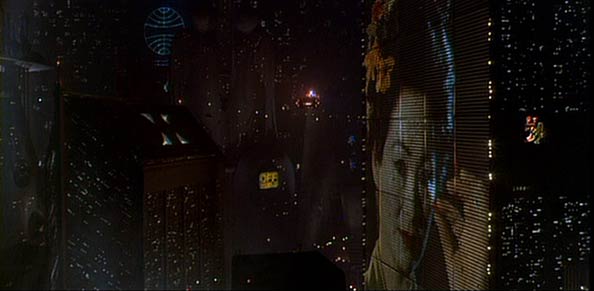
Commerce is our goal here at Tyrell. More human than human is our motto
The Visuals: The visuals in Blade Runner are simply stunning. We see corporate pharaohs ruling a society containing manufactured slaves from their Egyptian style pyramids, while we see rot and decay on the streets below. Noir-style beige and blacks dominate the screen, but are often supplanted by shocking neons. In Blade Runner, we see and Earth in ruin - a place that people are eager to leave. Only the poor and problematic are left on this rain-soaked dystopian planet that has been raped of any semblance of natural existence. The Earth is now almost completely devoid of trees and animals, which are now replaced with artificial ones for the pleasure of mankind.
The Story: Technology and corporate power are clearly the cause for this downfall. Genetic engineering has run rampant, and is combined with advanced organic computing technologies. It is in this world that we find a cast of flawed characters. Nobody is pure, nobody pristine. They are all a product of the environment they live in.
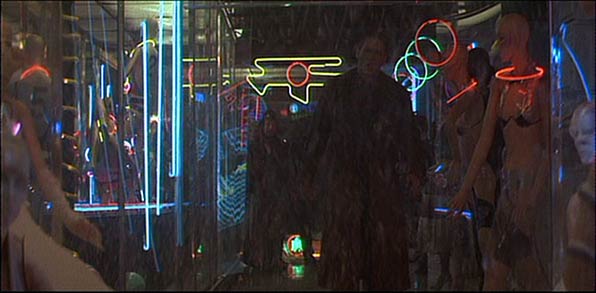
Replicants are like any other machine - they’re either a benefit or a hazard. If they’re a benefit, it’s not my problem.
To augment humanity’s needs and desires, replicants, or genetically engineered humans imbued with artificial intelligence have been developed. They serve many important roles including protection, pleasure slaves, and hard labor for the most dangerous environments. While replicants start out as rather straightforward and useful machines, over time, they start to develop awareness - their own personality, and eventually, free will and a desire for self-preservation. Because they are defined as property, Replicants are given a 4-year lifespan, which is enforced upon inception, and is irreversible.
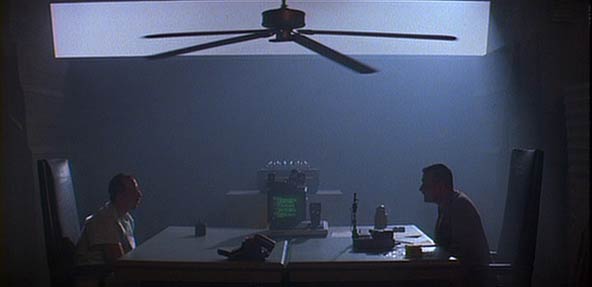
My mother? Let me tell you about my mother!
It is in this world that we encounter Deckard (Harrison Ford), a Blade Runner. Blade Runners are cops who hunt down Replicants. At the beginning of the movie, we find that Deckard has supposedly retired from the business.I say supposedly here, because if he is a replicant, then really, he has been imbued with false memories as well, and in fact has never been a blade runner prior to this. Really, he is just filling in as a laborer fulfilling another job that is too dangerous for humans.
Deckard is brought back in to "retire" 4 runaway "skin jobs" (replicants) who have murdered humans off-world and have escaped to Earth. Apparently, they seem to be interested in coming back to their creators - the Tyrell corporation. The story expands from there, and truly touches on some wonderful questions concerning ethical dilemmas that most certainly will arise in the future.
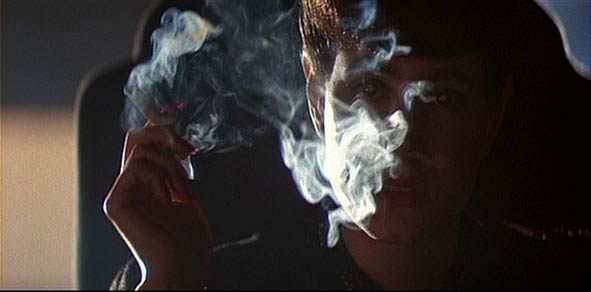
Are these questions testing whether I’m a replicant or a lesbian, Mr. Deckard?
I’m not in the business. I AM the business… Deckard encounters Rachael (played wonderfully by Sean Young), a replicant who during the movie discovers her true nature. Blade Runner does a masterful job of exploring the questions and emotions surrounding this. We see Rachael’s theme echoed in Natural City, Armitage, Thirteenth Floor, Ghost in the Shell, Serial Experiments Lain, Malice@Doll, the Animatrix, I, Robot, and others. This question about what degree artificial life forms are human is a central theme of the cyberpunk genre.
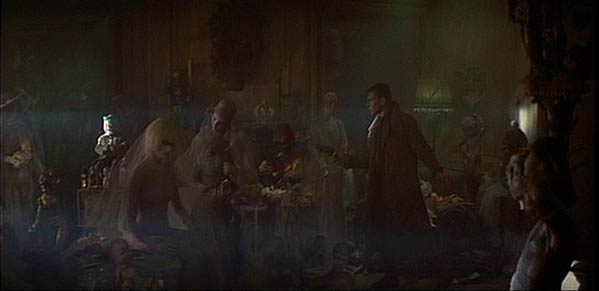
What is Human? While other movies have been terrific in exploring this, Blade Runner still sits at the top of the list, both for Racheal, and for Roy Batty, the leader of the renegade replicants. Roy’s monologue near the end (see the quote at the top), which was supposedly adlibbed by Rutger Hauer, captures in a single moment the ethical dilemma with creating sentient life. If they have freewill, can they really be considered property? And if they aren’t property, what are they, exactly?
Blade Runner uses mannequins and toys as its set piece for representing this dilemma. In Blade Runner, corporations create these glorified toys - moving mannequins if you will, to meet the needs of society, yet while the toys themselves are clearly a product of the society just like all the other noir characters, are they truly nothing more? And if we do consider them to be on par with humans, what obligations do they have to their creators, who invested time and money in their creation?
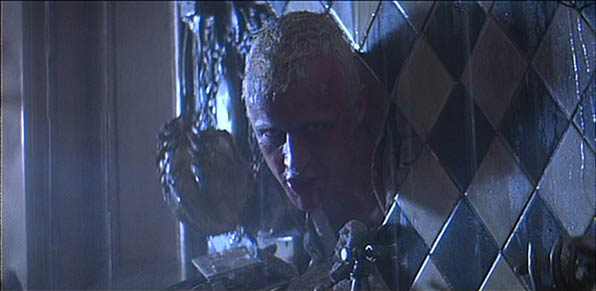
The light that burns twice as bright burns half as long - and you have burned so very, very brightly, Roy.
The Bottom Line: On top of all this philosophical questioning, we get some great noir-detective-like action and suspense. Roy Batty is truly a badass. Deckard’s pursuit of him is a very fun engagement, as is the climax. Its flat out terrific. The pacing is wonderful, the visuals are astounding, and the story is enthralling. By now I’m guessing most have seen this cinematic masterpiece, but if not, you are truly in for feast!
Page 2 - More Screen Captures–>>
~See movies similar to this one~
Tags: cyberpunk movie review
Year: 1988
Directed by: Shinya Tsukamoto
Written by: Shinya Tsukamoto
IMDB Reference
Degree of Cyberpunk Visuals: Very High
Correlation to Cyberpunk Themes: Very High
Rating: 10 out of 10
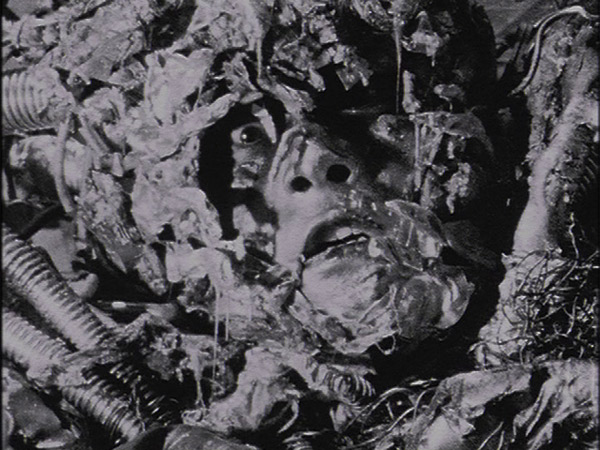
Overview: For another movie that taps out the weird shitometer scale, and the pinnacle of Japanese cyberpunk flicks, Tetsuo is simply terrific! I must warn you that this movie is NOT for everyone. We get a bevy of disturbing images, including extreme body manipulation, anal rape of a guy by a mechanically "enhanced" female, rape in the reverse by a man with a literal "power tool," and truly the most bizarre set of images one can imagine. But in all this, there are some truly interesting messages that emerge. Unlike other Japanese Cyberpunk films such as Rubber’s Lover, which is more of a one track film (extreme situations to prompt greater than human abilities), Testsuo provides a wonderful commentary on the direction of mankind.
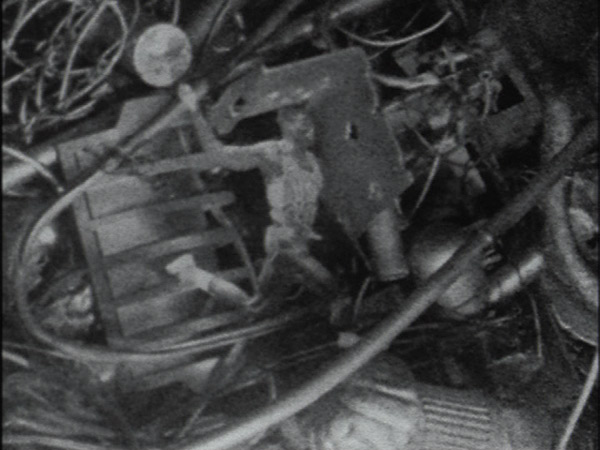
This is one of the best opening symbols for any movie I can remember. It sums up Tsukamoto’s message perfectly!
Tetsuo’s Message: While Tetsuo is a really bizarre, low budget, surrealist underground Japanese cyberpunk movie, it has a number of interesting themes running through it. On a societal level, Tetsuo explores how man’s technological dash to the future has resulted in an acute fear of technology, and that its ever encroaching progress is destroying our humanity. This is symbolically represented by a runner surrounded by scrap metal, and then later, a man in running gear who’s slowly being taken over by machinery when competing with another machine man.
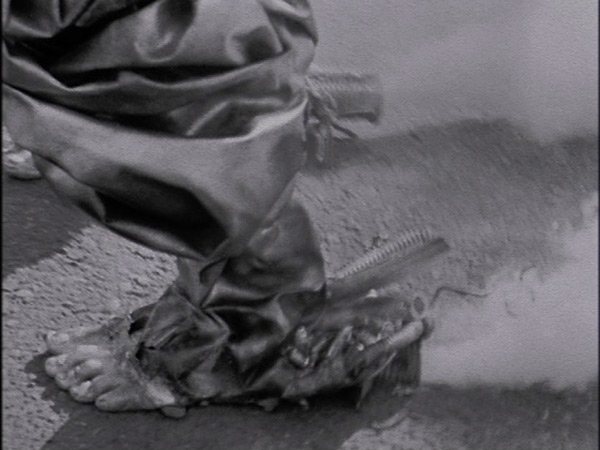
The clear message at the end is that by constantly competing with one another in our strive for perfection in an orderly society, we are destroying humanity at its core. Technology is our tool of choice for this destructive competition. The shot of the augmented foot above really captures this well, as does the race scene below.
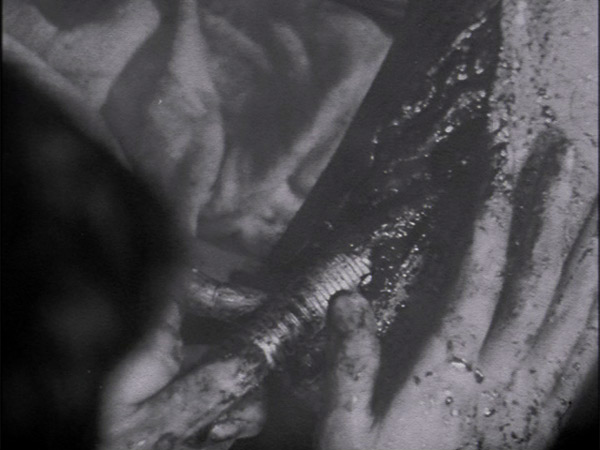
I can’t convey how truly disgusting this scene comes across
On a personal level, Tetsuo explores how guilt and repression can turn people into virtual "monsters." In this, we see an instance where an accidental car crash makes someone completely lose all sense of humanity and boundaries. This seems to fit with Asian cultures in that they are usually very reserved, but when they "cross" that line, the level of anger and craziness almost doesn’t have a limiter.
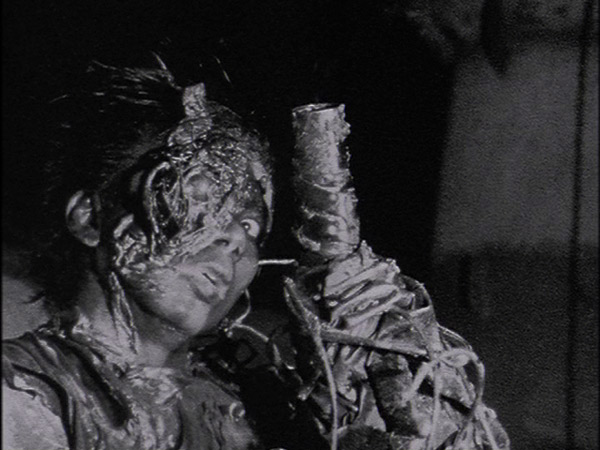
In combining this with the societal thought, Tetsuo posits that we are using technology as a crutch to cover up our own frailties, but that in doing so, we only serve to subvert our humanity. When this subversion is released, it becomes a perversion of immense proportions. In this sense, Tetsuo truly stretches the cyberpunk notion of "no boundaries" to its fullest.
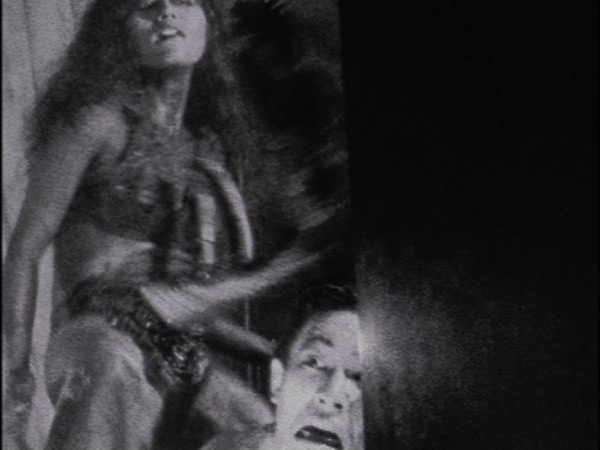
Yes, she’s about to do what you "think" she’s planning to do with that thing!"
The Bottom Line: Tetsuo is a great example of what a low-budget scifi film can accomplish. I thought the cinematography is absolutely brilliant. We get cool stop-motion animation, incredibly interesting shadows and film angles, and wonderful use of different shot textures. The industrial sound track furthers the truly bizarre mood. Truly, I can’t say enough of how impressed I am by this film. Again, Tetsuo is DEFINITELY not for everyone, but it certainly belongs in the top 10 best cyberpunk films ever made!
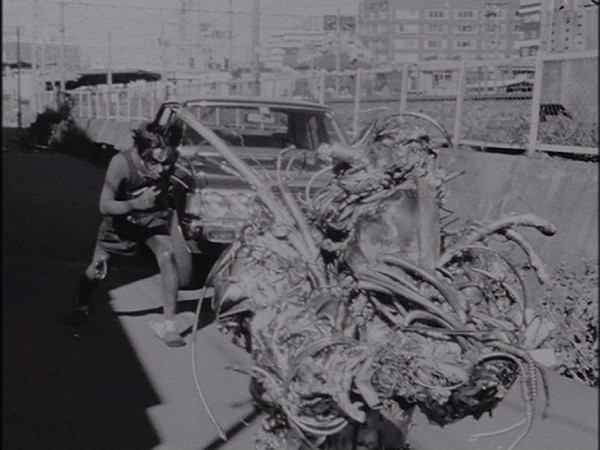
Screen Captures - ADULTS ONLY: I do have a second page of screen captures, but I MUST warn you - these are VERY graphic. They show one of the most intense sex and violence scenes every put on film. If you want to get a sense of he the extent that Japanese cyberpunk fullfills its “no boundaries” approach, take a look. But this page is intended for adults - and truly, only a few select few of those. Don’t look if you’re not comfortable with watching these things.
Tetsuo Page 2: Screen Caps - ADULTS ONLY–>>
|

























































